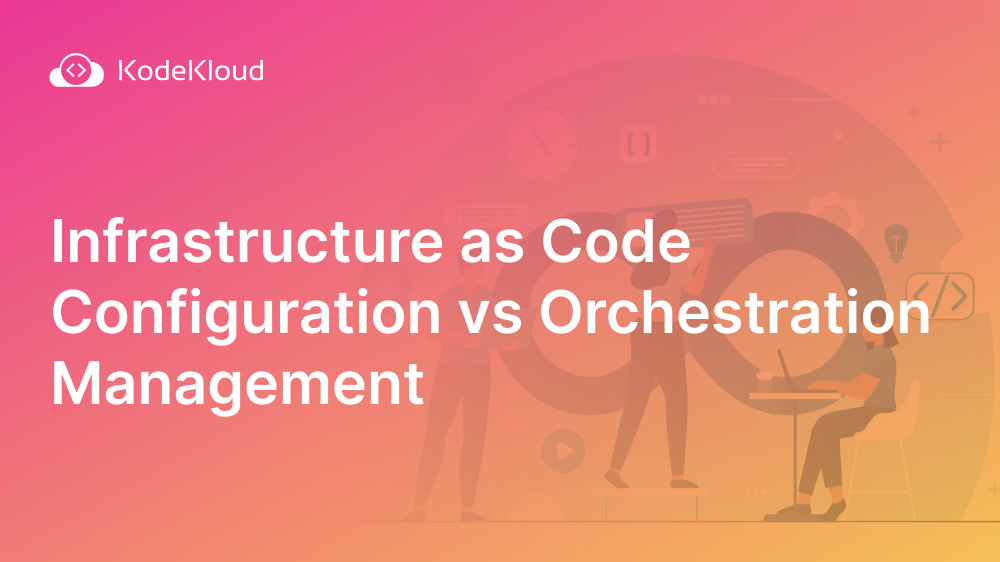Modern software development puts a lot of emphasis on automation, collaboration, repeatability, and rapid iteration. Two important concepts that make these objectives attainable are configuration management and orchestration. While they are related, they are not the same thing.
In this article, we’ll look at what these two concepts entail and the difference between them.
What is Configuration Management?
Configuration management is the process of maintaining and updating the configuration of an IT infrastructure, including hardware, software, and network components. It involves identifying the current state of the infrastructure, defining the desired state, and implementing changes to move from the current state to the desired state.
Configuration management helps ensure that the infrastructure is consistent, reliable, and secure. It also enables administrators to track changes, troubleshoot issues, and maintain compliance with industry standards and regulations. With the help of configuration management tools, administrators can automate routine tasks and reduce errors, freeing up time for more critical tasks.
There are various configuration management tools available in the market that can help IT administrators manage and automate the configuration of their infrastructure. Some popular configuration management tools include Ansible, Puppet, Chef, SaltStack, and CFEngine.
Learn more about the configuration management tool Ansible in this blog: What is Ansible in DevOps?
Try the Terraform HCL Lab for free

What is Orchestration?
Orchestration is the process of automating and coordinating complex workflows and tasks within an IT infrastructure. It involves managing the interactions and dependencies between different systems, services, and applications to ensure that they work together seamlessly to achieve a specific goal.
Orchestration can involve a variety of tasks, such as provisioning and configuring resources, deploying applications, and monitoring performance. It is often used to manage the deployment of virtual machines(VM) and containers across multiple servers or data centers.
Orchestration tools typically provide a graphical interface or scripting language that administrators can use to define and manage workflows. By automating routine tasks and minimizing human error, orchestration can improve efficiency, reduce costs, and increase the reliability of IT operations. Below are some of the popular orchestration tools categorized by what they orchestrate:
- Container orchestration - Kubernetes and Docker Swarm
- VM orchestration - VMware, OpenStack, and Apache CloudStack
Configuration Management vs. Orchestration
Below are the differences between configuration management and orchestration.
- Configuration management refers to the process of configuring and managing the software and infrastructure components. Orchestration, on the other hand, refers to coordinating and managing an application's deployment across multiple systems.
- Configuration management includes tasks such as installing software updates and managing system configurations. Orchestration, on the other hand, includes tasks such as deploying software and managing scaling and failover.
- Configuration management tools such as Ansible, Puppet, and Chef seek to automate tasks to improve efficiency and reduce errors. Orchestration tools such as Kubernetes and Docker Swarm automate tasks to make deploying and managing complex applications easier.
While the two concepts are related, they are distinct concepts serving different purposes in software development and deployment.
Check out our containers orchestration course, Kubernetes for Absolute Beginners.
.png)
Conclusion
Understanding configuration management and orchestration is crucial for anyone who works on modern software development projects. These concepts provide a framework for organizing and managing the software development process, as well as assigning roles to team members and stakeholders.
More on orchestration:
- Docker Containerization: Key Benefits and Use Cases
- Demystifying Container Orchestration: How Kubernetes Works with Docker
- Kubernetes vs. Docker Swarm: A Comprehensive Comparison (2023)
- What Is Containerization?
- Terraform vs. CloudFormation: A Side-by-Side Comparison
- What is Ansible Playbook and How to Write it?




















Discussion